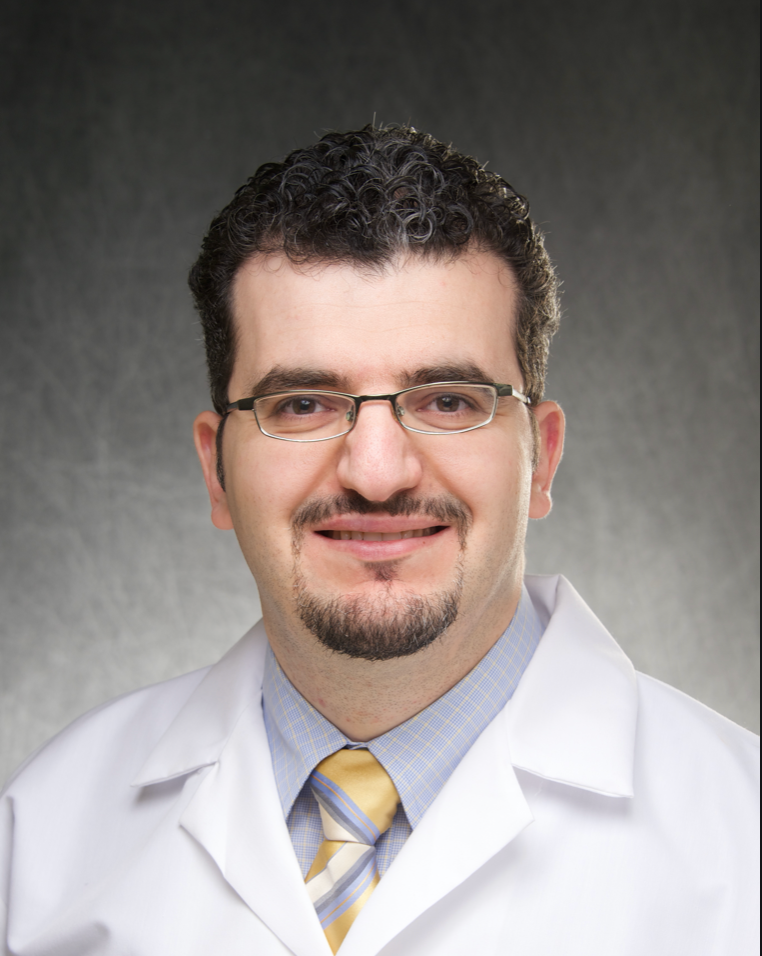Concurrent Durvalumab Plus Radiation Shows Promise in Localized Urothelial Cancer
A promising efficacy signal was observed when the immune checkpoint inhibitor durvalumab was added concurrently to radiation followed by adjuvant durvalumab as treatment of patients with localized urothelial bladder cancer.
Yousef Zakharia, MD

A promising efficacy signal was observed when the immune checkpoint inhibitor durvalumab (Imfinzi) was added concurrently to radiation followed by adjuvant durvalumab as treatment of patients with localized urothelial bladder cancer. The phase 2 study (NCT02891161), which explored this treatment strategy, was conducted to hopefully expand the treatment options for this patients population. Currently, few FDA-approved options exist.
Investigators of the study hypothesized that this combination would benefit patients who are cisplatin ineligible, unfit for surgery, or have locally advanced and unresectable disease based on the phase 3 findings of adjuvant durvalumab in another solid tumor, non–small cell lung cancer, as seen in the PACIFIC trial (NCT02125461).
The ongoing study aims to determine the safety and tolerability of concurrent durvalumab in combination with radiation therapy, as well as efficacy.
Of the 26 patients enrolled, 19 were male and 7 were female. They had a median age of 74 and 65.7% were deemed unfit for surgery. Additionally, most patients (65.4%) had resectable disease, and 88.5% were cisplatin ineligible. The majority of the patients in the study had an ECOG perofmance status of 2. Transurethral resection of the bladder tumor had been performed on 73.1% of patients, and the majority of patients (84.6%) did not have prior systemic chemotherapy. Hydronephrosis was present in 26.9% of the cohort. Ten patients had a TNM stage of T2 N0 M0, 6 had T3, 2 had T4 and 8 had T2-4N1-2. Finally, the bulk of the cohort (61.5%) did not have PD-L1 expression in their tumors.
Twenty-four of the 26 patients were evaluated for response and survival endpoints.
In an interview with Targeted Oncology, Yousef Zakharia, MD, a medical oncologist at the University of Iowa Hospitals & Clinics, discusses the study of concurrent durvalumab plus radiation and ongoing challenges with treating localized urothelial bladder cancer.
TARGETED ONCOLOGY: What treatment options are currently available for patients with bladder cancer who are cisplatin ineligible or unfit for surgery?
ZAKHARIA: For patients who are cisplatin ineligible, but they are fit for surgery, typically, we take them directly to surgery. But for patients who are not fit for both, neither for cisplatin nor for surgery, radiation therapy plus chemotherapy is the treatment of choice.
TARGETED ONCOLOGY: What was the rationale for the use of concurrent durvalumab and radiation therapy for this patient population?
ZAKHARIA: Durvalumab is an anti PD-L1 inhibitor, and it’s already FDA approved for metastatic bladder cancer after progression on chemotherapy. We know nowadays that immunotherapy plus radiation therapy work hand by hand, so that was the rationale of combining immunotherapy durvalumab with radiation therapy in this patient population who are typically frail and not eligible for chemotherapy. Having immunotherapy on board with radiation might be more tolerable.
TARGETED ONCOLOGY: Can you explain the design of the study?
ZAKHARIA: This clinical trial is for patients with muscle invasive bladder cancer, or staging T2 to T4 disease with positive pelvic lymph adenopathy, but not distant metastatic disease. We did allow N2 disease with pelvic lymphadenopathy only, and patients would get concurrent durvalumab plus radiation therapy to the pelvis, followed by maintenance durvalumab monthly for a total of 1 year. The primary endpoint of PFS rates at the first year, and disease control rate post both treatments of the concurrent durvalumab, radiation, and the adjuvant durvalumab. The secondary endpoints were other efficacy measures like overall survival (OS) and overall response rate. We are also doing some correlative endpoints or correlative studies related to this clinical trial.
TARGETED ONCOLOGY: What did you find in terms of efficacy in this study?
ZAKHARIA: We previously discussed the safety data at another meeting and the combination was deemed safe without major dose limiting toxicity that we encountered with this combination. Of the 24 patients that we enrolled in that clinical trial, we had a disease control rate of 72% at the end of 1 year, with a PFS rate of about 70% with an OS probability at the first year of 83%.
TARGETED ONCOLOGY: In terms of toxicity, what should oncologists watch out for with this combination?
ZAKHARIA: The combination was overall fairly well tolerable? The adverse event profile was in line with what we would expect with radiation therapy or with immunotherapy, including things like diarrhea, fatigue, cystitis from the radiation. There was nothing major outside of what we would expect with this combination or with either of these drugs alone.
TARGETED ONCOLOGY: What are the next steps with this research?
ZAKHARIA: There are now an ongoing clinical trial through the ECOG-ACRIN Cancer Research Group. It's the EA8185/INSPIRE study and the chair is Monica Joshi, MD, MRCP from Penn State Cancer Institute. This trial is actually using chemoradiation plus or minus durvalumab. This trial is currently ongoing and recording nationally.
TARGETED ONCOLOGY: In terms of ongoing challenges with this patient population, what unanswered questions exist?
ZAKHARIA: For this patient population, it's going to be challenging because we do not have too many treatment options available for them and many of them will have disease recurrence down the road. That's why we are excited about these preliminary results that we are seeing in this pilot study. We look forward to replicating these results in large phase 3 trials down the road.
TARGETED ONCOLOGY: Is there any other research that is looking into options for addressing recurrence in patients with localized urothelial cancer?
ZAKHARIA: Yes. For patients who are cisplatin ineligible, and they are fit for clinical trials, there are ongoing studies of neoadjuvant treatment using immunotherapy in that setting followed by surgery.